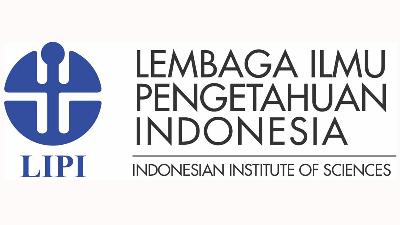HR Practices, Employment Engagement, Job Crafting, Organizational Citizenship Behavior Affect Task Performance (Bekasi City Banking Company)
Abstract
Keywords
Full Text:
PDFReferences
. Avolio, B. J.,Bass, B. M., & Jung, D. I. (1999). Re- examining the components of transformational and transactional leadership using the multifactor leadership questionnaire. Journal of Occupational and Organizational Psychology, 72(4), 441–462. https://doi.org/10.1348/0963179991.
. Alfes, K,,Shantz,A.D.and Truss,C. (2013). The link between perceived human resourcemanagement practices, engagement and employee behaviour: a moderated mediation model. International Journal of Human Resource Management,Vol.24 No.2, pp. 330-351.
. Bakker,A.B.and Demerouti,E. (2014). Job Demands–Resources Theory, John Wiley & Sons,Wellbeing, pp.1-28.
. Becker,B.E. and Huselid, M.A. (2010). SHRM and job design: narrowing the divide. Journal of Organizational Behavior, Vol.31 No 2/3,pp.379-388.
. Bednall,T.C., Sanders, K. and Runhaar,P. (2014). Stimulating informal learning activities through perceptions of performance appraisal quality and human resource management system strength: a two-wave study. Academy of Management Learning and Education, Vol. 13 No. 1, pp.45-61.
. Berg, J.M., Dutton, J.E. and Wrzesniewski, A. (2008). What is job crafting and why does it matter. Retrieved Form the Website of Positive Organizational Scholarship on April, Vol.15.
. Bowen,D.E.and Ostroff, C. (2004). Understanding HRM- firm performance linkages: the role of the strength of the HRM system. Academy of Management Review, Vol.29 No.2,pp.203-221.
. Boxall, P., Ang, S.H. and Bartram, T. (2011). Analysing the “black box” of HRM: uncovering HR goals, mediators, and outcomes in astandardize service environment. Journal of Management Studies, Vol.48 No.7,pp.1504- 1532.
. Christian, M.S., Garza, A.S.and Slaughter, J.E. (2011). Work engagement: a quantitative review and test of its relations with task and contextual performance. Personnel Psychology, Vol. 64 No. 1, pp.89-136.
. Damanpour, E dan Aravind D. (2011). Managerial Innovation : conception process, and atencendents. Management and Organization Review 423-424
. Demerouti,E.,Bakker, A.B.and Gevers, J.M. (2015). Job crafting and extra-role behavior: the role of work engagement and flourishing. Journal of Vocational Behavior, Vol.91,pp. 87-96.
. Demerouti, E., Cropanzano, R. and Bakker, A. (2010). From thought to action: employee work engagement and job performance in Bakker. A.B. and Leiter, M.P. (Eds),Work Engagement: A Handbook of Essential Theory and Research, Psychology Press, Hove, East Sussex,pp.147-163.
. Evans, W.R. and Davis, W.D. (2005). High-performance work systems and organizational performance: the mediating role of internal social structure. Journal of Management, Vol. 31 No.5,pp.758-775.
. Farhang, Alizad & Fadaee (2018). The impact of organizational behavior through in process and performance firms. Iranian Journal of Optimization.
. Grant, A.M. and Parker, S.K. (2009). Redesigning work design theories: the rise of relational and proactive perspectives. The Academy of Management Annals,Vol.3 No.1,pp.317-375.
. Griffin, M.A., Neal, A. and Parker, S.K. (2007). A new model of work role performance: positive behavior in uncertain and interdependent contexts. Academy of Management Journal, Vol. 50 No.2, pp.327- 347.
. Hackman, J.R. and Oldham, G.R. (1976). Motivation through the design of work: test of a theory. Organizational Behavior and Human Performance, Vol.16 No.2, pp.250-279.
. Jiang, K.F., Takeuchi, R. and Lepak, D.P. (2013). Where do we go from here ? New perspectives on the black box in strategic human resource management research. Journal of Management Studies, Vol.50 No.8, pp.1448-1480.
. Jiménez-Jiménez, D., dan Sanz-Valle,R. (2011). Organizational learning, and performance. Journal of Business Research, 64(4), 408-417.
. Liao, H.,Toya,K.,Lepak,D.P.and Hong,Y. (2009). Dotheys Management and employee perspectives of high-performance work systems and influence processes on service quality. Journal of Applied Psychology, Vol .94 No.2, p.371.
. Lind, E.A. and Van den Bos, K. (2002). When fairness works: toward a general theory of uncertainty management. Research in Organizational Behavior, Vol.24,pp.181-223.
. Rich,B.L., Lepine J.A. and Crawford, E.R. (2010). Job engagement: antecedents and effects on job performance. Academy of Management Journal, Vol.53 No.3, pp.617-635.
. Salanova, M., and Schaufeli, W.B. (2008). A cross-national study of work engagement as a mediator between job resources and proactive behavior. The International Journal of Human Resource Management, Vol.19 No.1,pp.116-131.
. Schaufeli, W.B. and Bakker, A.B. (2004). Job demands, job resources, and their relationship with burnout and engagement: a multi-sample study. Journal of Organizational Behavior, Vol. 25 No.3, pp.293-315.
. Shipton, H., Sanders, K., Atkinson, C.and Frenkel, S. (2016). Sense-giving in health care: the relationship between the HR roles of line managers and employee commitment. Human Resource Management Journal, Vol.26 No.1, pp.29-45.
. Slemp,GR.&Vella-Brodrick,D.A. (2014). Optimising employee mental health; The relationship between intrinsic need satisfaction, job crafting,and employee well-being. Journal of Happiness Studies, 15 (4), 957-977.
. Tabarsa & Dori. (2014). The Impact of Organizational Innovation on the Performance Through Innovation Capabilities in Process and Product,Vol 10.
. Time et al. (2015). Snape,E. and Redman,T. (2010). HRM practices, organizational citizenship behaviour, and performance: a multi-level analysis. Journal of Management Studies, Vol. 47 No.7,pp.1219-1247.
. Truss, C., Shantz, A., Soane, E., Alfes, K. and Delbridge, R. (2013). “Employee engagement, organizational performance and individual well-being: exploring the evidence, developing the theory. The International Journal of Human Resource Management, Vol. 24 No. 14, pp. 2657-2669.
. Wrzesniewski, A. and Dutton, J.E. (2001). Crafting a job: revisioning employees as active crafters of their work. Academy of Management Review, Vol.26 No.2, pp.179-201.
Refbacks
- There are currently no refbacks.

This work is licensed under a Creative Commons Attribution 3.0 License.
Supported by :


 Indexed by :
Indexed by :




